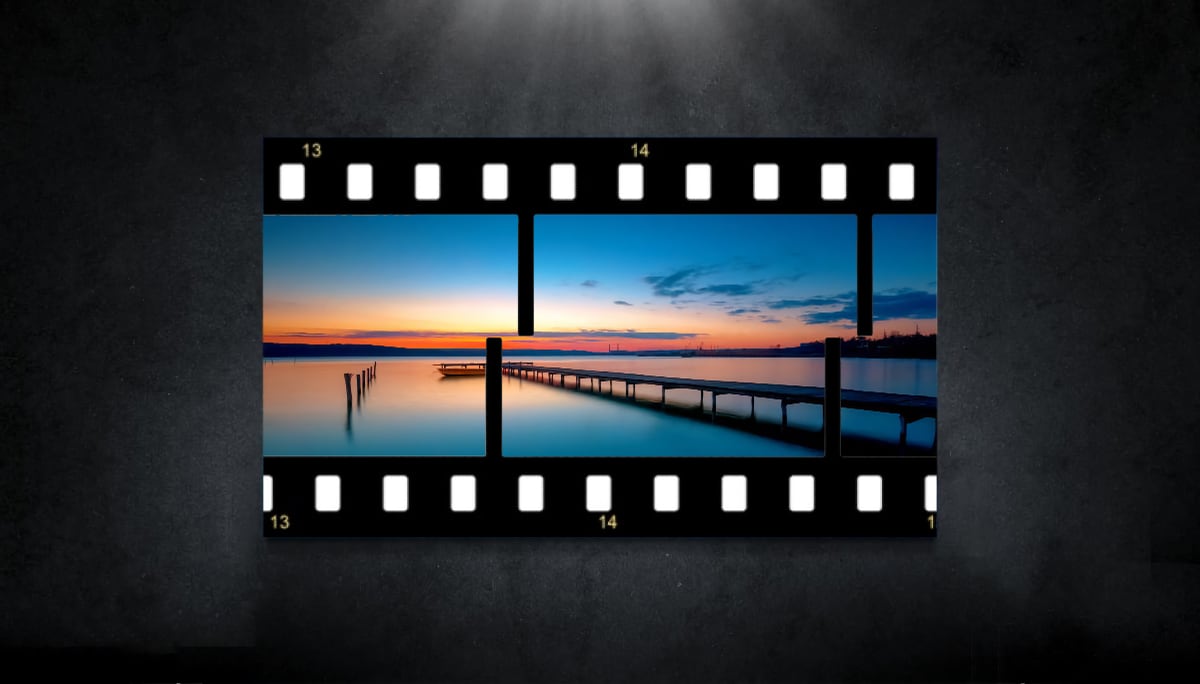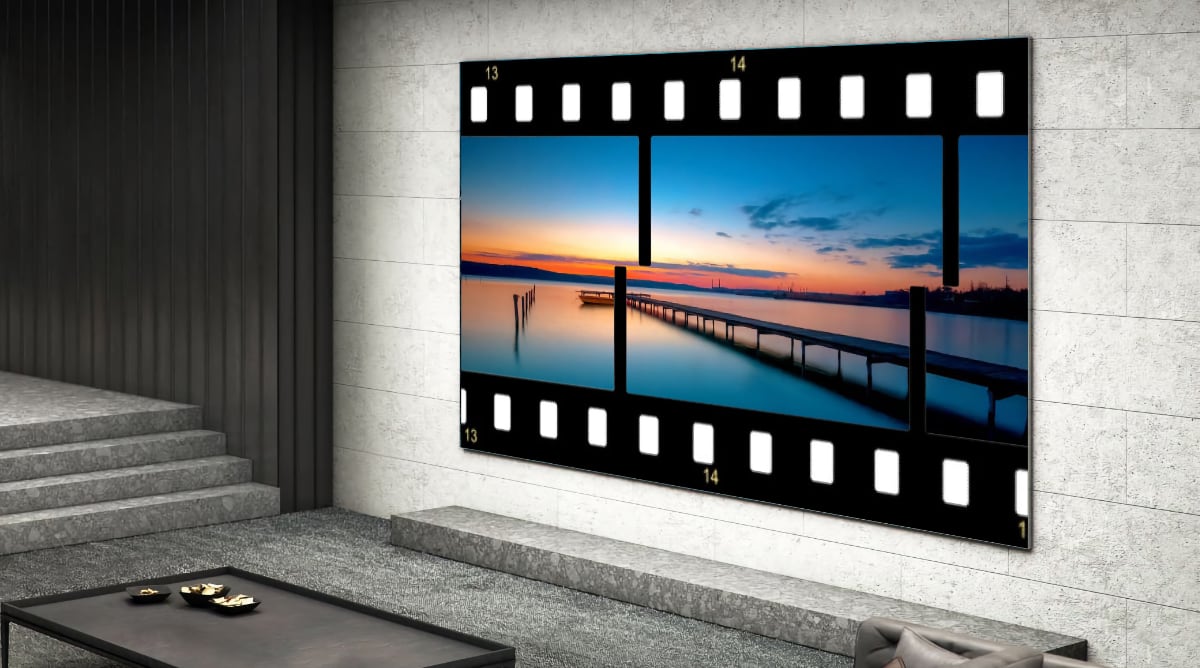Parts of Hollywood have united to phase out fractional frame rates like 23.976fps. Here is a status update on their work across Amazon Prime Video, Apple TV+, Disney+, Max and Netflix.
In 2021, the industry coalition NoMore2398 urged the TV industry to phase out fractional frame rates, such as 23.976fps.
As you may know, fractional frame rates were introduced in the early days of analog TV to make color television possible. While it was a convenient hack for backwards compatibility at the time, fractional frame rates have unfortunately stuck around for decades, causing issues with audio/video synchronization and complicating video workflows.
It's not about 24fps
Phasing out 23.976fps does not mean phasing out 24fps, which remains Hollywood's favorite frame rate for movies and series to create the "cinematic look." Instead, it will just be 24.000fps, which is the integer frame rate of the fractional 23.976fps (more details here).
Also read: Why 24fps is not enough for HDR movies
However, phasing out fractional frame rates will also make it easier and more feasible to scale up to HFR (High Frame Rate) formats in the future. The fractional 59.94fps should also be abandoned, although this will take longer since the entire NTSC broadcast system in North America is built around it.

Fractional frame rates can introduce out of sync issues amongst other problems
A status update
Now, three years later, FlatpanelsHD is publishing a status update based on our own observations in the field of streaming, which is the market segment that is most flexible and therefore best positioned to lead the change from fractional to integer frame rates.
Our approach is simple: We have looked at recent releases or catalog titles from some of the major streaming services, including Amazon Prime Video, Apple TV+, Disney+, Max and Netflix, to check if they are in the process of switching to 24.000fps or remaining in 23.976fps territory.
Here are the results:
Phasing out 23.976fps: A 2024 status update
| Netflix | |
|---|
| Supacell (season 1) | 24.00fps |
| Bridgerton (season 3) | 23.976fps |
| The Fall of The House of Usher (season 1) | 24.00fps |
| The Witcher (season 1) | 24.00fps |
| The Irishman | 24.00fps |
| Okja (2017) | 24.00fps |
| The Reverant | 23.976fps |
| Guillermo Del Toro's Pinocchio | 24.00fps |
| Red Notice (2021) | 24.00fps |
| Stranger Things (season 1) | 23.976fps |
| Stranger Things (season 4) | 23.976fps |
| Squid Game (season 1) | 23.976fps |
| Disney+ | |
| The Acolyte (season 1) | 24.00fps |
| The Simpsons (season 34) | 23.976fps |
| Prey | 24.00fps |
| Loki (season 2) | 24.00fps |
| The Mandalorian (season 3) | 24.00fps |
| Elemental | 23.976fps |
| Luca | 23.976fps |
| Haunted Mansion | 23.976fps |
| Ahsoka (season 1) | 24.00fps |
| Secret Invasion (season 1) | 24.00fps |
| The Little Mermaid (2023) | 23.976fps |
| Guardians of the Galaxy 3 | 23.976fps |
| Amazon Prime Video | |
| The Boys (season 4) | 23.976fps |
| The Rings of Power (season 1) | 24.00fps |
| The Wheel of Time (season 2) | 23.976fps |
| The Marvelous Ms. Maisel (season 5) | 23.976fps |
| The Burial | 24.00fps |
| The Continental (season 1) | 23.976fps |
| Jack Ryan (season 4) | 23.976fps |
| The Expanse (season 5) | 23.976fps |
| Gen V (season 1) | 23.976fps |
| The Tomorrow War | 23.976fps |
| Guy Richie's The Covenant | 23.976fps |
| Max | |
| The Last of Us (season 1) | 23.976fps |
| The House of the Dragon (season 1) | 23.976fps |
| Game of Thrones (4K re-release) | 23.976fps |
| The Idol (season 1) | 23.976fps |
| My Adventures with Superman (season 1) | 23.976fps |
| The Batman | 23.976fps |
| Wonder Woman 1984 | 23.976fps |
| Apple TV+ | |
| Napoleon | 23.976fps |
| Sugar (season 1) | 23.976fps |
| Invasion (season 2) | 23.976fps |
| The Morning Show (season 3) | 23.976fps |
| Foundation (season 2) | 23.976fps |
| Silo (season 1) | 23.976fps |
| Tetris | 23.976fps |
| Sharper | 23.976fps |
| Hijack (season 1) | 23.976fps |
| Prehistoric Planet (season 2) | 23.976fps |
FlatpanelsHDStill a long way to go
As you can see, there is still a long way to go in the transition from fractional to integer frame rates. Some of the major streamers have not even begun.
Netflix and Disney+ appear to be the only streamers to have earnestly started the transition to integer frame rates, despite many streamers using the same mastering studio partners.
We will check back again in a few years to see how things are progressing.
A call to phase out fraction frame rates
| As explained by the industry coalition in 2021:
Issues created by fractional frame rates:
- Increase in cost of production and mastering to account for both frame rates.
- Increase in cost of distribution (storage, QC check, transfer, …) as all the assets have to be stored in both formats doubling the needed storage.
- The fractional frame rates in use have an infinite set of repeating decimals digits resulting in different values being used in practice (e.g. 23.98 or 23.976 is in reality 23.976023976023976023976023976023976023…)
- Inaccurate frame rate is indicated on some recording and playback devices (reported as 24fps while, in reality, running at 23.976fps), which introduces a mismatch in editorial and out of sync issues down the line.
- Creation of two extra timecode systems: drop-frame and non-drop-frame.
The 0.1% slow down propagation down the pipeline, which creates even more fractional frame rates (e.g. 59.94fps).
- Slowing down adoption of HFR (High Frame Rate) technology because of the cost and complexity of supporting fractional frame rate as well.
What they propose:
- We believe fractional frame rate is a technology of the past and should be phased out over time.
- We invite the manufacturers to use non-fractional frame rates (e.g. 24fps) and accurately indicate the correct frame rate for each device.
- We invite the industry to transport and display content at their intended frame rate.
- We invite all stakeholders, content creators, industry leaders, Television and Movie executives, editors and mastering? Artists? to agree on a timeline upon which fractional frame rates will no longer be supported by newly released equipment. |
FlatpanelsHD








